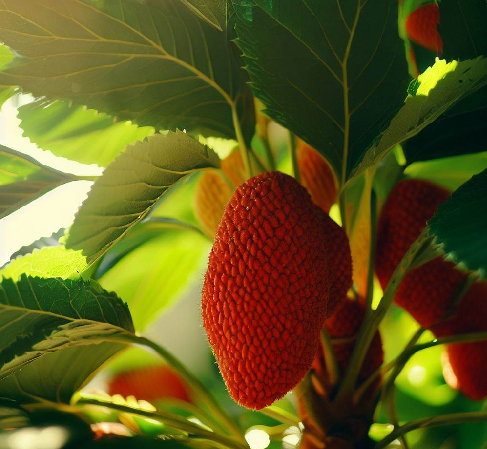Arbutus 'Marina,' also referred to as the Marina Strawberry Tree, is an alluring evergreen tree that bears scrumptious strawberries. It is a popular option among gardeners due to its distinctive qualities. This article will address the advantages and cons of growing Marina Strawberry Trees, maintenance suggestions, typical issues, diseases, and its root system.
Pros
Beautiful Appearance
Marina Strawberry Trees are popular among gardeners for a variety of reasons, including their outstanding visual appeal. The tree produces an eye-catching display all year long with its glossy foliage and striking, cinnamon-colored bark. The appealing clusters of tiny, vivid red fruits that hang from the branches also give the landscape a vibrant touch.
Edible Fruit
The small, round fruits produced by Marina Strawberry Trees resemble strawberries in both appearance and flavor. These berries not only have a lovely appearance but are also tasty. When completely ripe, the fruits have a sweet, slightly tangy flavor that is ideal for nibbling or incorporating into a variety of dishes, including jams, jellies, and desserts.
Low Maintenance
Marina Strawberry Trees also have the benefit of requiring little upkeep. These trees require little maintenance once they are established and are largely self-sufficient. They can grow in a variety of soil types and can withstand drought. They also resist pests and diseases, requiring less monitoring and intervention.

Cons
Invasive Potential
The potential for invasiveness of Marina Strawberry Trees is one of their major drawbacks. The tree can colonize regions not intended for cultivation because of the abundance of seeds in the fruits, which can quickly germinate and spread. The tree may displace native species and disturb natural ecosystems as a result of its invasiveness, which may have negative ecological effects. Consequently, it is vital to prevent the spread of the fruits into natural habitats.
Messy Droppings
The Marina Strawberry Tree's fruit is delightful but it can also make a mess. Fruit accumulation on the ground as they ripen and fall off the tree could pose a slipping hazard. The fruits might also leave stains on concrete patios or sidewalks. This problem can be reduced by regular cleanups or by planting the tree in the right place.
Limited Availability
Compared to several other decorative trees, Marina Strawberry Trees are less accessible. They may be less frequent in nurseries or garden centers because of their hybrid status. Consequently, it could be difficult to locate a trustworthy supplier for these trees.
Care
Proper maintenance is necessary to guarantee the healthy growth of Marina Strawberry Trees. When cultivating these trees, keep the following in mind:
Planting Location
Select a planting place that receives both full sun and some shade. Ensure proper drainage to avoid waterlogging because strawberry trees prefer well-draining soil. Avoid planting the tree in windy places since its branches may become fragile.
Watering and Fertilizing
Despite the fact that Marina Strawberry Trees can withstand some drought, it is still essential to water them frequently in the first year after planting in order to develop a sturdy root structure. After then, watering can be cut back, although the tree might still profit from sporadic irrigation during protracted dry spells. To encourage healthy development, apply a balanced fertilizer in the early spring.
Pruning and Training
Unless there are broken or crossed branches that need to be removed, Marina Strawberry Trees generally do not require pruning. Light pruning, however, can be carried out in late winter or early spring to shape the tree and preserve its ideal form. An open, balanced canopy can be established with the right training when the tree is young.
Common Problems and Diseases
Despite their resilience, Marina Strawberry Trees are however susceptible to some issues and infections.
Pests and Insect Issues
Marina Strawberry Trees may occasionally attract pests such as aphids, spider mites, or scale insects. Maintain a regular check on the tree for indications of infection, such as warped leaves or sticky residue, and act quickly if necessary. These pests can often be managed with the aid of horticultural oils or insecticidal detergents.
Fungal and Bacterial Diseases
Marina Strawberry Trees are susceptible to fungi that cause leaf spot or powdery mildew in humid environments or during extended wet spells. The spread of these diseases can be controlled with good cleanliness, which includes clearing away fallen leaves. Sprays that contain fungicides may be used to manage outbreaks if necessary.
Root System
Marina Strawberry Trees have profound, wide-reaching roots. They are able to efficiently extract soil moisture and nutrients due to their root system.
